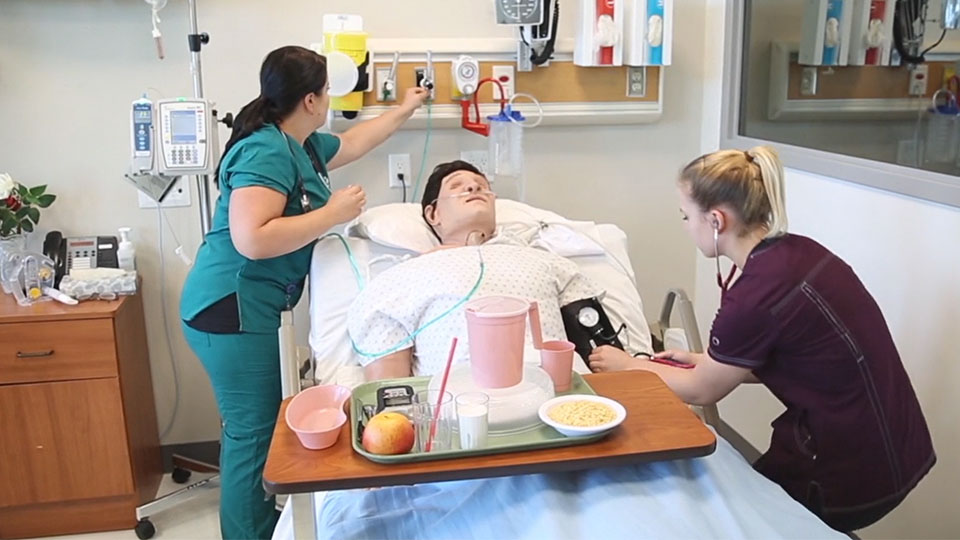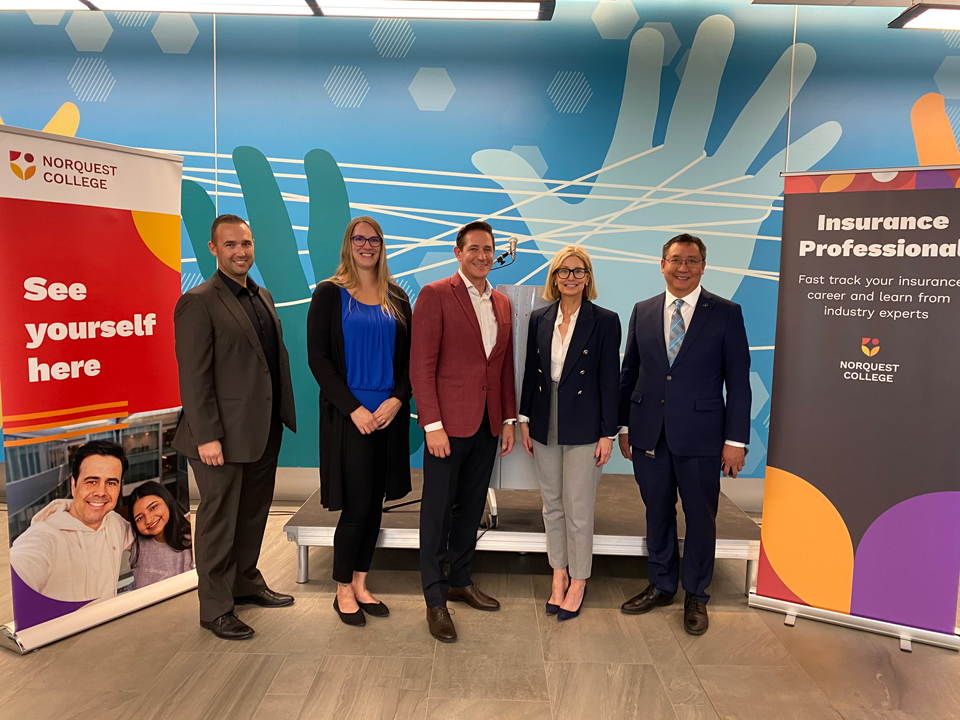Clinical simulations improve learning for practical nurse students
January 30, 2024

As an academic institution, the faculty and staff at NorQuest College are always looking for ways to innovate teaching methods and to help students develop the right skills necessary to succeed in their future careers.
During Spring 2022 and 2023 Olson Center for Health Simulation was able to have some groups of practical nurse program students and their instructors participate in simulation-based experiences as part of their clinical courses for Continuing Care and Acute Care and Surgery. This simulation project was designed to meet learning outcomes for students without compromising the quality of learning as they practiced different clinical simulations.
Benefits of simulations for nursing students
Simulation-based education is based on experiential learning andragogy that provides a safe learning environment where students can apply their classroom and laboratory knowledge in a real-world scenario with life-like situations and conditions.
Debriefing on scenarios
Following a scenario, students would meet with their simulation facilitators and instructors to debrief. Using a model, debriefing allows students to reflect on how they handled specific situations and learn from mistakes in a controlled, low-risk environment.
When asked to write their experiences on a whiteboard, one student said, “We do not learn from experience, we learn from reflecting on experience.”
In the post-simulation survey, 63% of students agreed that the debriefing was valuable to them, while 73% strongly agreed they felt better prepared to respond to changes in their patient’s condition.
Increasing confidence
In most clinical placements low-frequency, students will not get the experience of working in a high-risk, low-frequency scenario (such as a code blue). However, during simulations, we can offer consistent learning scenarios to all students and not leave it to chance in their practicum setting. This experience can help them feel more confident going into the workplace and give them the skills they’ll need to be better prepared for the workforce when encountering a similar situation.
In fact, one of the clinical students treated a patient with the same complications presented in a prior simulation. The student said this about their experience, “When I was in the clinical setting, I was able to compare the scenarios and the real-life client. It was pretty much the same things—all the same signs and symptoms . . . I was able to move forward with the client and the assessments.”
Also, 63% of clinical students strongly agreed they felt more confident in their assessment skills, while 69% strongly agreed they felt more confident in their ability to report information to their healthcare team.
Increase clinical placement capacity
Leveraging simulations for students can help reduce the need for clinical placements, effectively alleviating the pressure for securing clinical hours for each work-integrated learning component of students’ classes.
Additionally, it can also help ensure equitable clinical learning experiences for all students—regardless of where and when they participate in an on-site clinical.
Next steps for simulation learning at NorQuest College
Based on this simulation project, we know how important similar opportunities are for our students’ growth and educational development. While this is only the beginning of exploring how simulations can impact our students’ confidence, career success, and learning outcomes, we are excited to continue exploring ways simulations can help reduce the need for on-site clinical placements.


